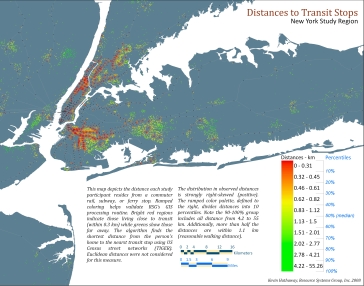The Effects of the Built Environment on Physical Activity
National Academies - National Institutes of Health
Do the characteristics of a person's community directly influence their health status and levels of physical activity? With funding from the National Institutes of Health, Boston University's Slone Epidemiology Center and RSG explored this question in a multi-year research effort in New York City, Los Angeles, and Chicago. By following more than 22,000 women over six years, the research team explored the effects of the built environment, including pedestrian networks, land use mix, transit access, and housing and employment density on their levels of physical activity and body mass index. In just one example, Los Angeles residents living in communities with over 6.5 housing units/acre were 42% more likely to walk over five hours a week for transportation purposes. These effects were even stronger in Chicago and New York. The full findings were summarized in two peer-reviewed journal articles.

